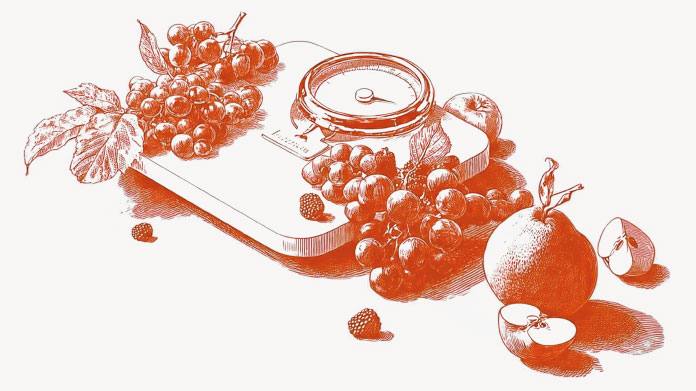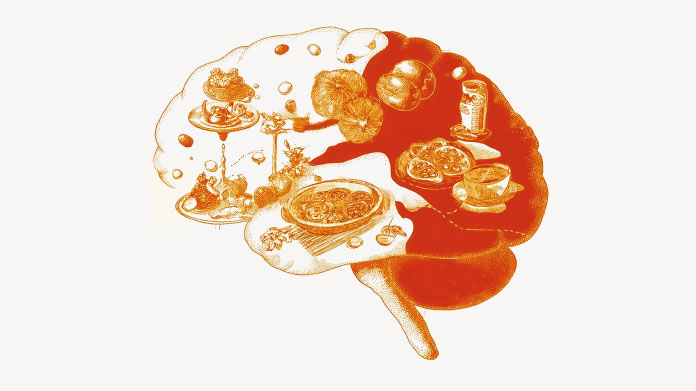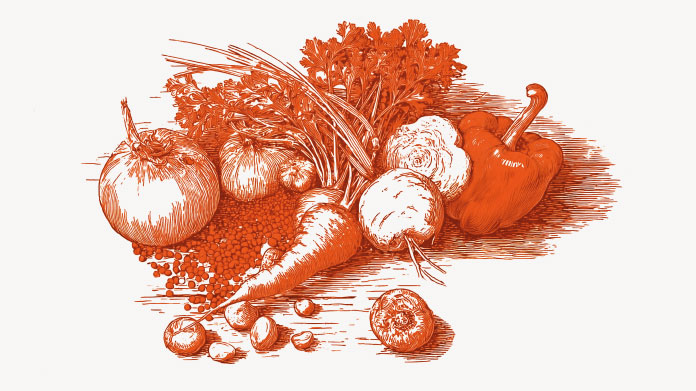6 top tips to put an end to snacking
We all know it – snacking is one of the main obstacles to staying in shape or losing weight. But it’s not always easy to say no in the face of an intense craving or a dip in energy...

1. Eat better to stave off the urge to snack
When you get that ‘empty’ feeling between meals, it could be a sign of a lack of energy and nutrients. To prevent unhealthy cravings, nutritionists stress the importance of adopting a healthy balanced diet. A complete meal provides all the energy your body needs to function properly for several hours. By definition, a balanced meal should contain starch, protein, a dairy product as well as fruit and vegetables.
2. Don’t skip meals if you want to avoid cravings
Alongside a healthy, balanced diet, it’s also important to maintain a good eating ‘rhythm’. That means not skipping any of the three main meals of the day, particularly breakfast, the importance of which is often underestimated. A decent breakfast will provide energy and vitality throughout the morning, so you won’t feel the need to indulge in ‘elevenses’. On the other hand, it’s just as important not to ‘trade’ lunch– even if you eat it at your desk - for dinner!
3. Take your time when you eat to prevent post-meal ‘snack attacks’
The brain plays a key role in regulating feelings of hunger. In particular, it generates the desire to eat, as well as the satiety effect – the sensation you feel when you’re no longer hungry. However, it needs time to regulate hunger and satiety. When you eat a meal, it takes your brain at least 20 minutes to register that you’ve eaten enough. That’s why it’s important to take your time over eating, both to avoid consuming excessive amounts and to prevent the urge to snack after a meal.
4. Make sure you eat fibre to prolong the satiety effect
Apart from eating slowly, there are other ways of accelerating and prolonging the sensation of satiety. For example, you can opt for appetite-suppressing foods such as apples, grapefruit, almonds, oat bran or even locust bean gum. All these foods have a high fibre content which produces a natural hunger-curbing effect by either increasing the volume of the alimentary bolus or slowing down digestion in the small intestine.
5. Drink water to suppress the desire to eat
To make the most of the hunger-suppressing effects of dietary fibre, good hydration is essential. In fact, it’s worth knowing that there are two types of fibre – soluble and insoluble. Soluble fibre, such as the pectin in apples, forms a kind of gel when it comes into contact with water, which slows down digestion and prolongs the sensation of satiety. Insoluble fibre, such as hemicellulose found in oat bran or psyllium seeds, absorbs water and expands, thus increasing the volume of the alimentary bolus.
6. Plan for cravings to ‘avoid the worst’
If, in spite of all the above-mentioned advice, you still feel the urge to snack during the day, it’s a good idea to anticipate such cravings in order to avoid foods that are too sugary or fatty. Make sure you have a healthy snack available such as an apple or handful of almonds. You can also take advantage of slimming supplements such as Appetite Control Formula, which is formulated to control feelings of hunger and reduce appetite.
Keywords
4 Days
Great customer service - responsive …
I ordered from them and my item was unavailable for sometime. I was super happy when they reactivated my order and shipped my item which arrived very quickly. Great customer service.
Ruth Rueter
5 Days
Super fast shipping
Super fast shipping
Donald Borling
8 Days
Reputable companysearch and the number of…
The research and the number of selection of products.
NAKHJAVAN Shervin
21 Days
The Anti Aromatase is a great product
The Anti Aromatase is a great product. You just need to have constant inventory. Recently this product has been out of stock.
GEORGE Verne
23 Days
Great help on chat
Great help on chat. Knowledgeable and friendly.
Jason Argos
26 Days
Customer service was fast and friendly.
Customer service helped to stop the transaction process of the subscription. I appreciated that.
Greenie
27 Days
I order here due to the high quality of…
I order here due to the high quality of the products and the quick delivery of items - thank you
Barbara J
28 Days
SuperSmart's Eye Pressure supplements: highly recommended!
I purchase SuperSmart's Eye Pressure supplements regularly for over 5 years, and gotta say they are truly a wonderful product for my Glaucoma. Highly recommended if you have eye pain from your Glaucoma.
D. Martinez
33 Days
Quick service
Quick service
MONELL
33 Days
Speedy service.
Speedy service.
ROSENTHAL Marvin
37 Days
Clear website- Efficient
Clear website. Excellent search engine and fast delivery!
Mohamad Hussein
40 Days
They have great products.
They have great products.
Vickie
40 Days
Great Shipping Time!
You Have A Great Shipping Time! Praise The Lord!
DMHoge
42 Days
Doctor Recommended!
Good pricing, very good availability, doctor recommended (couldn't find what I needed anywhere else), and it took only a week to arrive (which I can't complain about).
Al
42 Days
Great product and fast shipping
Great product and fast shipping
Marie





